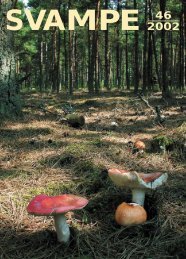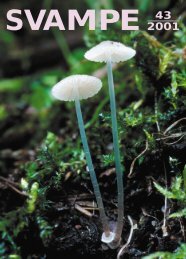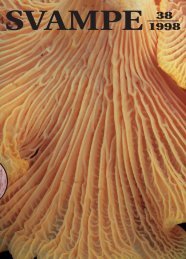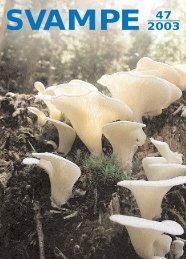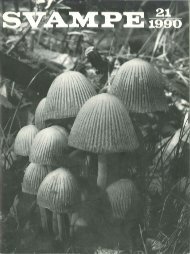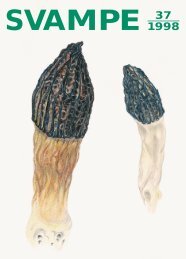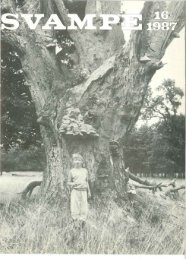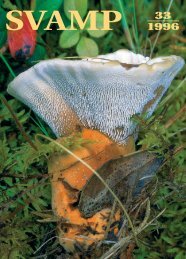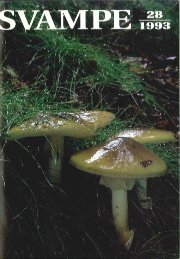Friesia X, 4-5
Friesia X, 4-5
Friesia X, 4-5
You also want an ePaper? Increase the reach of your titles
YUMPU automatically turns print PDFs into web optimized ePapers that Google loves.
- 297 -<br />
the plant pathogens grow best on media with an initial pH of 5.0 to<br />
6.5. It was noticed that the pH of the culture filtrates drif'ted towards<br />
neutral point. According to LILLY & BARNETT (1951), these changes<br />
in pH were due to changes in the relative amount of acids and bases<br />
formed or withdrawn and to the ionization constants of these compounds.<br />
.<br />
The pathogen utilized all the carbon sources except organic acids<br />
(malie and tartaric). COCHRANE (1958) has assigned three factors<br />
which interfere with the utilization of organic acids. Firstly, the<br />
cells are often impermeable to organic acids at physiological pH levels,<br />
secondly, the utilization of neutralized organic acids eauses a rise of<br />
the culture pH which may interfere with growth and thirdly, the<br />
chelation of inorganic ions by certain organic acids; which of the<br />
above factors may be responsible for failure of the present organism<br />
to develop mycelial growth on the organic aeids included in the present<br />
investigation could not be established. Present results are, however,<br />
also not in agreement with those of AGNIHOTRI (1968) who<br />
observed growth of Colletotrichum capsici on these organic acids.<br />
Glucose, mannose and galaetose were found to be good sources of<br />
carbon. Similar results have also been reported by numerous investigators<br />
(TANDON & BHARGAVA 1964; RAINA et al. 1970; BONN &<br />
CAPPELLINI 1970). Polysaccharides except inulin supported good<br />
growth of the present organism. The utilization of these substanees<br />
by fungi depends upon secretion of the necessary hydrolytic enzymes.<br />
The poor growth on inulin may be due to the limited synthesis of<br />
enzyme inulase. In the current study sugar alcohols (dulcitol and mannitol)<br />
supported poor growth. Present results are in agreement with<br />
those of CHATURVEDI (1964) and TABER et al. (1968) who reported<br />
poor growth of Colletotrichum capsici and Alternaria raphani on<br />
dulcitol and mannitol respectively. The faet that the present organism<br />
grew poorly on mannitol suggests that the eulture may laek polyol<br />
dehydrogenases and, therefore, could neither use nor synthesize mannitol.<br />
Nitrates were found to be satisfactory sources of nitrogen. Similar<br />
results have been obtained by THIND & MADAN (1970) and BAlS et al.<br />
(1970). Moderate growth on calcium nitrate as compared to the good<br />
growth on rest of nitrates may be attributed to the differences in<br />
their metallic ions. It is apparent from Table III that the fungus was<br />
incapable of growing in a nitrogen free medium and on sodium nitrite.<br />
Nitrites are eonsidered to be toxie to fungi at acidic pH values. The




